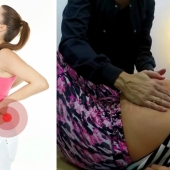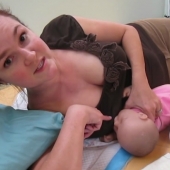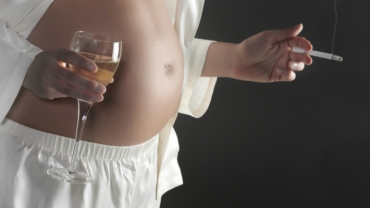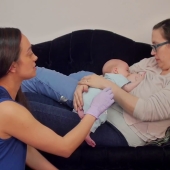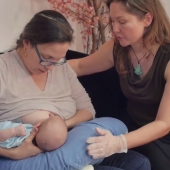Storing your breast milk, you have quite a few different options. One is to use storage bags. Two, are to use bottles. A lot of women actually these days are choosing to use glass bottles. You just have to be very careful if you are going to be freezing them. And most containers are now BPA free, the plastic ones.
And so, any of the above are absolutely fine, but storage guidelines are very simple. It's the rule of six, six, six. It's six hours out fresh, pumped fresh, six days in the refrigerator, six months in the freezer. Or if you have a deep freezer, 12 months.
And if you do not have a special rack, where the first one in is the first one out, you're going to want to label and date them so that you use the oldest one first.
Warming the milk for the baby after it's been stored is also very simple. You do not want to put it in the microwave. It can catch hot spots, which is not good. It can burn the baby's mouth. But also it loses certain nutrients if you do microwave. So we do not want to microwave.
Running it under hot water or putting a pan of hot water, just on the stove, not necessarily boiling, just hot, and placing the bottle or the bag in there to warm up, lukewarm, just very comfortable. Test it on your wrist to see if it's comfortable. It should be fine for the baby.
You want to just gently swirl it. You don't want to shake it because the fat will get caught around the rim of the bottle. So we want to just gently swirl it after warming it and then you can offer it to the baby. There are many moms who choose not to warm it at all and that's absolutely fine.
You can give your baby cold milk. It's just that coming out of the breast, it's body temp, so it's very, very warm. And they're used to warm milk, but it's not going to cause them to cramp. It's not going to cause them to have any problems. It's an issue, really, of preference.
There are many many moms who say, "I don't want to be in the middle of the park and have to find someplace to warm a bottle," and that's absolutely fine. They carry a cold bottle with them and the baby learns to accept that and that's fine.
We do not recommend that you upgrade. So if you've had a bottle out on the counter for five hours, and you know in the next hour, you're not going to be using it, I would recommend that you use it versus putting it in the refrigerator.
If you want to immediately refrigerate right after pumping, that's fine, but just remember not to upgrade. And move from the refrigerator to the freezer, if it's been in there for too long, too many days. And you don't want to move from the counter to the refrigerator if it's been out for too long.
And if your baby has started a bottle and did not finish it, then you have to throw the rest away. You cannot rewarm it later. So we have to be very careful when storing.
If you're storing in the freezer, I always recommend storing in small increments. One ounce, two ounce, or three ounce increments versus putting a six ounce bottle, because that is going to be the one day that you're offering it, and the one day that the baby's only taking an ounce and a half, and then you've just lost the rest of that milk. We can't restore it.
About video: Pick up some tips on how to store your breast milk from lactation consultant Melissa K. Nagin in this Howcast video.
- 53 views

